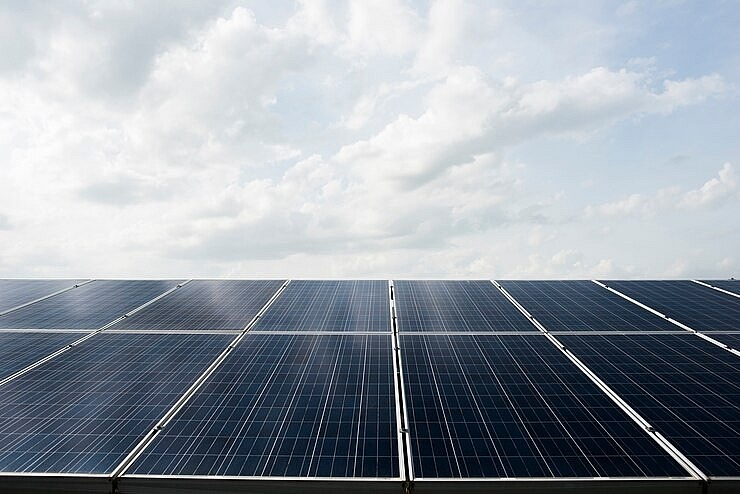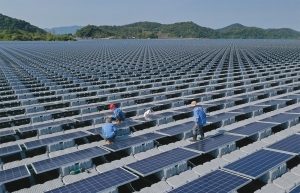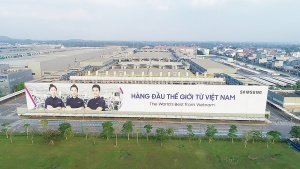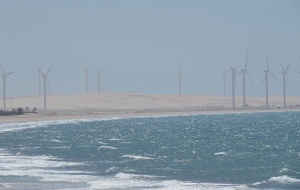EU underscores importance of trade with Vietnam
Josep Borrell Fontelles, Vice President of the European Commission and High Representative for Foreign Affairs and Security Policy at the EU, visited Vietnam last week to discuss enhancing cooperation in areas including security and sustainable development. Fontelles emphasised that the EU wants to lift the Vietnam-EU relations to a comprehensive strategic level, and considers Vietnam a key partner in the Asia-Pacific region. He noted that the EU is implementing various strategies to expand cooperation with Vietnam and the region.
“The EU will continue supporting Vietnam to achieve net-zero emissions by 2050 through the effective implementation of the Just Energy Transition Partnership (JETP). The EU also aims to strengthen cooperation with Vietnam within frameworks like the Global Gateway strategy,” Fontelles said.
 |
| EU underscores importance of trade with Vietnam, illustration photo/ Source: freepik.com |
The Global Gateway strategy aims to support clean investments and help partner countries, including Vietnam, achieve sustainable development goals and Paris Agreement objectives. The strategy focuses on sectors such as green transition, climate change, digital transition, sustainable transformation, and human capital development.
The European Investment Bank (EIB) has meanwhile committed €200 million ($217 million) in loans for Bac Ai project, part of Vietnam’s Power Development Plan VIII. This project aims to enhance electricity storage and reserve capacity, supporting the integration of renewable energy into the grid.
The EIB and Vietnam’s Ministry of Finance have agreed on a €500 million ($542.68 million) framework loan for Vietnam to achieve its JETP goals, with an official agreement is expected soon. The EIB also provides technical assistance and financing for Ho Chi Minh City’s metro line 2 and Hanoi’s third metro line, phase 2.
The EU’s total support for Vietnam’s JETP amounts to €876.5 million ($951.6 million), including €176.5 million ($191.6 million) in grants, making the EU the largest donor in grants for Vietnam’s JETP. Additionally, the EU is providing €142 million ($154.2 million) in grants to support renewable energy development, energy efficiency, and Vietnam’s energy information system.
Cooperation with Vietnam is a top priority for the EU, bolstered by the EU-Vietnam Free Trade Agreement (EVFTA), which took effect in 2020. This agreement has positioned Vietnam as the EU’s top trading partner in Southeast Asia.
The General Statistics Office reported that the two-way trade value between the EU and Vietnam reached $38.5 billion in the first seven months of this year, up from $33.6 billion in the same period last year.
A business confidence index survey released last week by the European Chamber of Commerce in Vietnam, conducted by Decision Lab, indicates that the EVFTA has opened doors for European businesses, although challenges remain. Nearly two-thirds of respondents reported benefits, with 27 per cent experiencing moderate to significant advantages, up from 18 per cent in 2023.
EuroCham members consistently cited tariff reductions, increased market competitiveness, and expanded market access as key benefits. Other advantages include streamlined supply chains and improved business transparency. The EVFTA has significantly boosted Vietnam’s exports to Europe, increasing from $37.9 billion in 2019 to over $52 billion in 2023, particularly in sectors such as electronics, textiles, footwear, agriculture, and seafood.
The EVFTA has also enhanced Vietnam’s attractiveness to EU and non-EU investors, making the EU the sixth largest foreign direct investment partner of Vietnam.
According to the Vietnamese Ministry of Planning and Investment, the EU has a total investment stock of approximately $28.3 billion across around 2,450 projects. Many EU companies have made significant investments in Vietnam, including Siemens, Bosch, Lego, Sanofi, and Piaggio. Adidas also has numerous suppliers in Vietnam.
For example, Siemens is introducing a range of innovative and AI-powered products and solutions in Vietnam, supporting the food and beverage (F&B) and electronics sectors in accelerating digital transformation, enhancing competitiveness, and promoting sustainability.
“The industrial and manufacturing sector is the bedrock of Vietnam’s economic prosperity. In recent years, this sector has emerged as a significant contributor to the nation’s GDP, accounting for 33-35 per cent in 2022,” said Tran The Hien, head of Siemens Vietnam Digital Industries. “The electronics and F&B industries stand out, with remarkable growth and potential. Siemens has been a strong and unwavering supporter in this dynamic environment.”
Julien Guerrier, Ambassador and Head of the European Delegation to Vietnam, highlighted that the EVFTA has successfully created spillover effects, transforming Vietnam into a regional production hub and attracting investors from non-EU countries.
“Based on this factual trade and investment development, we can predict a stable growing trend for bilateral EU-Vietnam trade and investment flows in the coming years, even if there may be a deceleration in growth or some minor decreases after the rapid expansion of the past few years,” he said. “Investment flows do not solely depend on the tangible benefits of tariff elimination or the legal certainty provided by the EVFTA. EU and other investors pay close attention to the reforms Vietnam undertakes to improve its business climate.”
 | Acquisitions prepare for energy wave Both foreign and local groups are seeking progress in Vietnam’s energy sector to tap into the green growth potential through big deals. |
 | Samsung Electronics Vietnam to expand renewable energy procurement Samsung Electronics Vietnam is on track to ramp up its climate action by expanding its procurement of renewable energy. |
 | MoIT report addresses offshore wind project concerns Despite the ambitious targets set out by the Power Development Plan VIII, no offshore wind projects have yet been approved or assigned to investors. |
What the stars mean:
★ Poor ★ ★ Promising ★★★ Good ★★★★ Very good ★★★★★ Exceptional
Related Contents
Latest News
More News
- EVN launches major power infrastructure projects nationwide (December 19, 2025 | 18:17)
- VAL inaugurates second production line to meet domestic animal feed demand (December 19, 2025 | 16:37)
- Sun Group pioneers urban tram system in Phu Quoc (December 19, 2025 | 15:00)
- Seven major projects launched to drive Hanoi’s next growth phase (December 19, 2025 | 14:00)
- Securing capital and efficiency for Vietnam’s 2026-2030 growth ambitions (December 17, 2025 | 10:00)
- Vietnam bucking trend in the global M&A landscape (December 16, 2025 | 14:20)
- HDS Summit spotlights Vietnam’s rising role in regional supply chains (December 16, 2025 | 08:00)
- Kolon signs $48 million airbag supply deal with Autoliv (December 15, 2025 | 18:14)
- National Assembly approves Vinh–Thanh Thuy expressway project (December 15, 2025 | 18:02)
- Quang Tri green-lights $1.59 billion LNG-fired power project (December 15, 2025 | 17:59)

 Tag:
Tag:





















 Mobile Version
Mobile Version